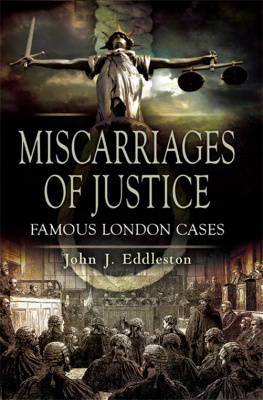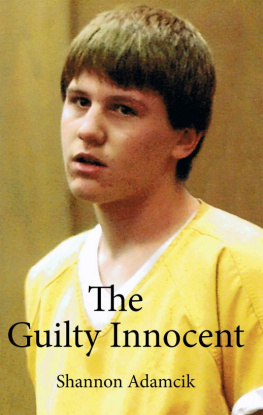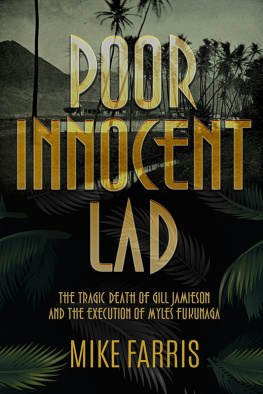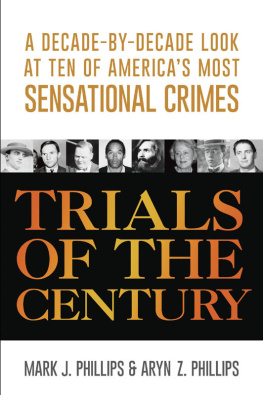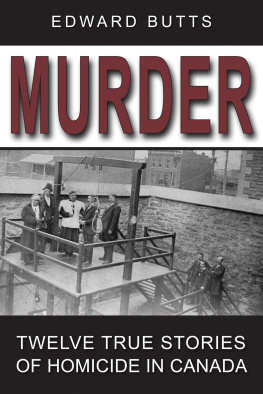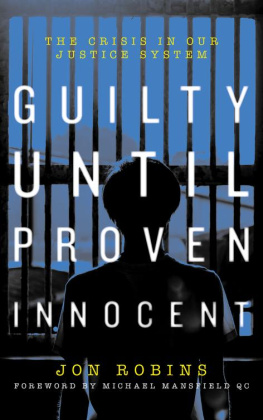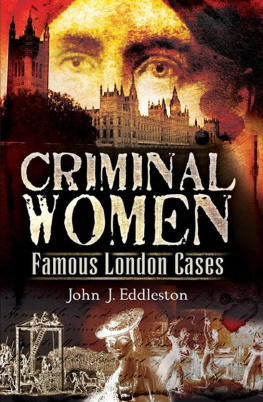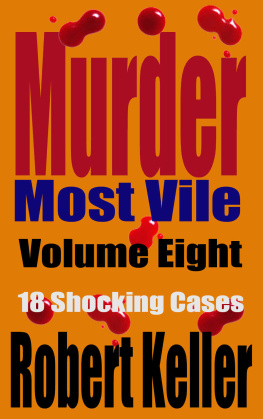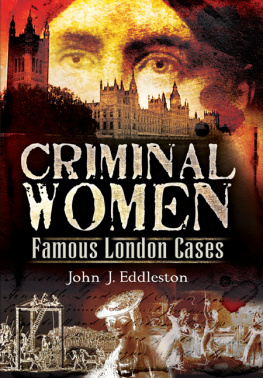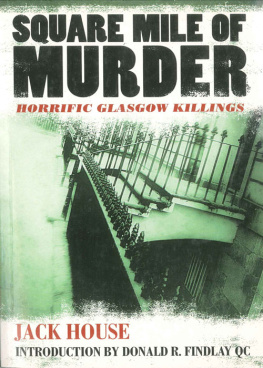TRUE CRIME FROM WHARNCLIFFE
Foul Deeds and Suspicious Deaths Series
Barking, Dagenham & Chadwell Heath
Barnsley
Bath
Bedford
Birmingham
Black Country
Blackburn and Hyndburn
Bolton
Bradford
Brighton
Bristol
Cambridge
Carlisle
Chesterfield
Colchester
Coventry
Croydon
Derby
Dublin
Durham
Ealing
Folkestone and Dover
Grimsby
Guernsey
Guildford
Halifax
Hampstead, Holborn and St Pancras
Huddersfield
Hull
Leeds
Leicester
Lewisham and Deptford
Liverpool
London's East End
London's West End
Manchester
Mansfield
More Foul Deeds Birmingham
More Foul Deeds Chesterfield
More Foul Deeds Wakefield
Newcastle
Newport
Norfolk
Northampton
Nottingham
Oxfordshire
Pontefract and Castleford
Portsmouth
Rotherham
Scunthorpe
Southend-on-Sea
Staffordshire and The Potteries
Stratford and South Warwickshire
Tees
Warwickshire
Wigan
York
OTHER TRUE CRIME BOOKS FROM WHARNCLIFFE
Foul Deeds and Suspicious Deaths Series
A-Z of Yorkshire Murder
Black Barnsley
Brighton Crime and Vice 1800-2000
Durham Executions
Essex Murders Executions & Hangings in Newcastle and Morpeth
Norfolk Mayhem and Murder
Norwich Murders
Strangeways Hanged
The A-Z of London Murders
Unsolved Murders in Victorian and Edwardian London
Unsolved Norfolk Murders
Unsolved Yorkshire Murders
Yorkshire's Murderous Women
Please contact us via any of the methods below for more information or a catalogue.
WHARNCLIFFE BOOKS
47 Church Street Barnsley South Yorkshire S70 2AS
Tel: 01226 734555 734222 Fax: 01226 734438
E-mail: enquiries@pen-and-sword.co.uk
Website: www.wharncliffebooks.co.uk
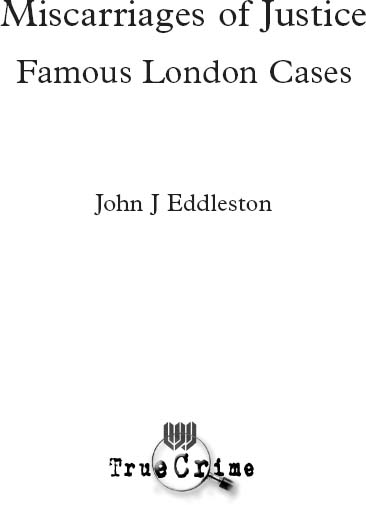
First published in Great Britain in 2009 by
Wharncliffe Local History
an imprint of
Pen & Sword Books Ltd
47 Church Street
Barnsley
South Yorkshire
S70 2AS
Copyright John J Eddleston, 2009
ISBN 978 1 84563 096 6
ePub ISBN 9781844684243
PRC ISBN 9781844684250
The right of John J Eddleston to be identified as author
of this Work has been asserted by him in accordance
with the Copyright, Designs and Patents Act 1988.
A CIP catalogue record for this book is available from the British Library.
All rights reserved. No part of this book may be reproduced or transmitted in any form or by any means, electronic or mechanical including photocopying, recording or by any information storage and retrieval system, without permission from the Publisher in writing.
Printed and bound in the UK by
MPG Books Group
Pen & Sword Books Ltd incorporates the Imprints of
Pen & Sword Aviation, Pen & Sword Family History,
Pen & Sword Maritime, Pen & Sword Military, Wharncliffe Local History,
Pen & Sword Select, Pen & Sword Military Classics, Leo Cooper,
Remember When, Seaforth Publishing and Frontline Publishing
For a complete list of Pen & Sword titles please contact
PEN & SWORD BOOKS LIMITED
47 Church Street, Barnsley, South Yorkshire, S70 2AS, England
E-mail: enquiries@pen-and-sword.co.uk
Website: www.pen-and-sword.co.uk
Contents
Introduction
In the twentieth century a total of 865 people were executed in the United Kingdom. In the years since the abolition of capital punishment just four of those people have received posthumous pardons: Timothy John Evans, Derek William Bentley, Mahmood Hussein Mattan and George Kelly.
It may be that the reader believes that it is acceptable that four innocent men were hanged, out of a total of 865, but when one has researched every single one of those cases, as I have, then the number who may well have been innocent appears to rise. It is my personal opinion that there was either a reasonable doubt, or obvious signs of mental instability or some other factor that indicates that there should not have been an execution, in over 100 of those cases.
Yet this only covers the cases where someone was actually put to death. If one adds other cases where the death sentence was commuted, or where a life sentence was given after capital punishment had been abolished, then the number rises even further.
This book looks at just nine cases, involving twelve people who were tried for murder. Of those twelve, nine were sentenced to death and eight actually executed. More importantly, five of those twelve have since been pardoned. And these are only cases from London; what of those from the rest of the country?
Read the stories for yourself and decide whether you would really sanction either the execution, or the imprisonment for years, of those whose stories are told in these pages.
Acknowledgements
I would like to thank my partner, Yvonne Eddleston, for her invaluable help in preparing this volume. Not only did she assist with the research but she also proof-read every story before I submitted the manuscript.
I would also wish to thank the staff of the The National Archives at Kew, who always make it a pleasure to visit. In addition, my thanks must go to the British Newspaper Library at Colindale.
Finally I would like to offer my appreciation to my publisher, Wharncliffe Books.
Chapter 1
Louise Josephine Jemima Massett
1899-1900
On Friday 27 October 1899, two ladies alighted from a train at Dalston Junction railway station. Mary Teahan was a governess, living at 46 Walpole Street, Isleworth. Her friend, Margaret Ellen Briggs, lived at Twickenham and both ladies had caught a train from Richmond in Surrey, to Dalston, so that they might attend a lecture in a schoolroom close by. The train had been due to arrive at 6.05pm but was running a little late. As a result, it was close on 6.19pm when Mary and Margaret climbed down onto Platform 3.
The two ladies walked into the ladies waiting room on that same platform and Margaret waited there whilst Mary went down the passageway which led to the water closets. There were two cubicles inside and Mary Teahan chose to enter the first, but upon trying to gain entry, she found that something behind the door was blocking her way.
The cubicle was far from well lit but in the dim light Mary saw what appeared to be a child's face but surely that could not be. No, it was most probably another lady who had fallen ill. The matter must be reported at once.
Mary left the water closets area and rejoined her friend, Margaret to whom she mentioned what she had discovered. It was then that they spotted a porter, pushing a barrow along the platform. Joseph John Standing listened closely as Mary Teahan told him that she thought there was a lady who might have fainted or fallen ill inside the first cubicle. Then, perhaps rather surprisingly, having told their story, neither lady waited on the platform. They left the station and continued on their way to their destination.
It was 6.38pm by the time Joseph Standing told Mr Cotteral, the foreman porter, what the ladies had told him. On Cotteral's instructions, Standing then took the story to the station inspector, David Bundy. It was now approximately 6.40pm.
Bundy informed Standing that he should go to the water closet and check the story for himself. Standing did as he had been instructed and entered the ladies toilets. He walked first to the second cubicle, the one farthest from the entrance and saw nothing untoward. It was then that he gently pushed open the door of the first cubicle and found that there was something on the floor behind the door.

